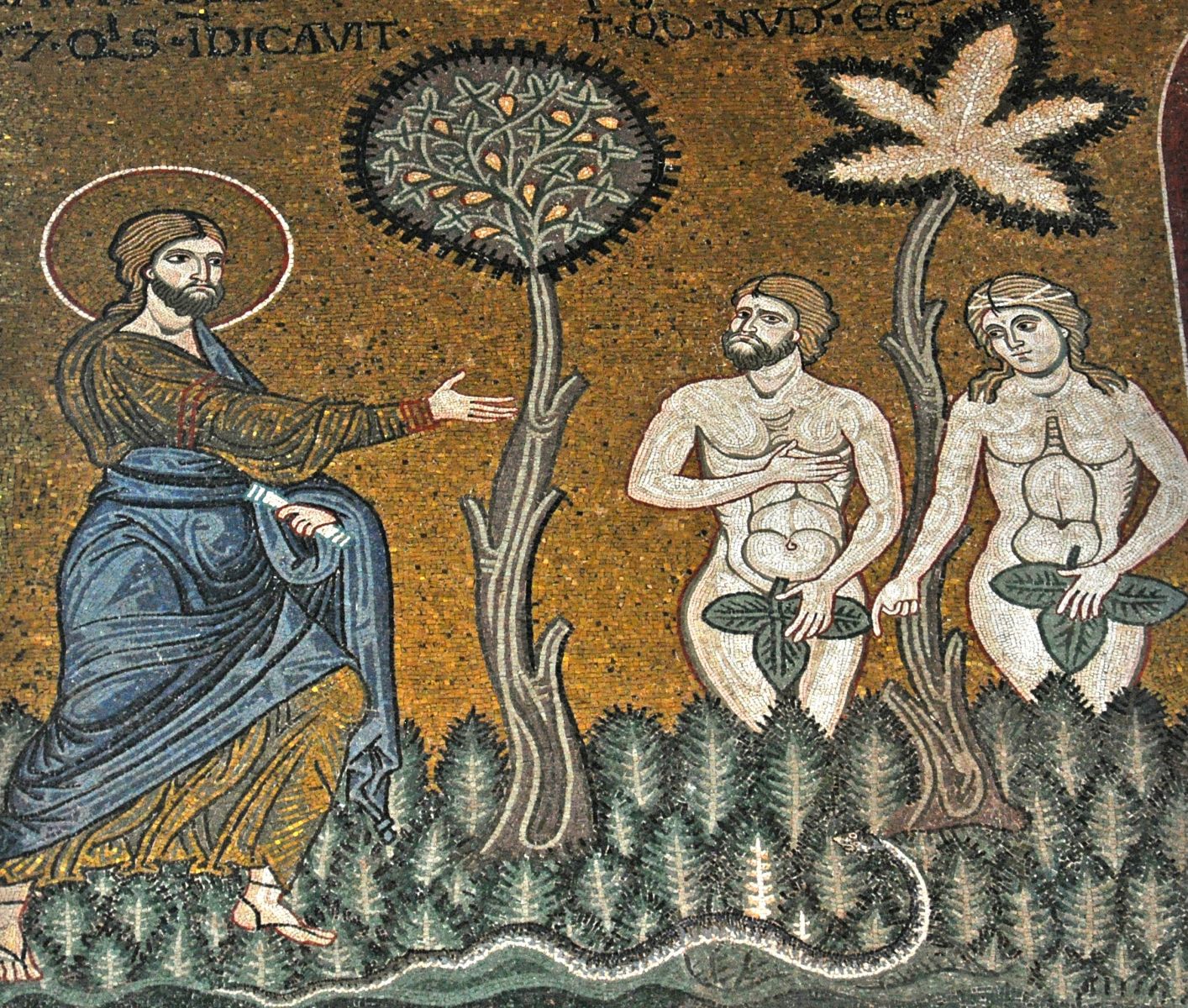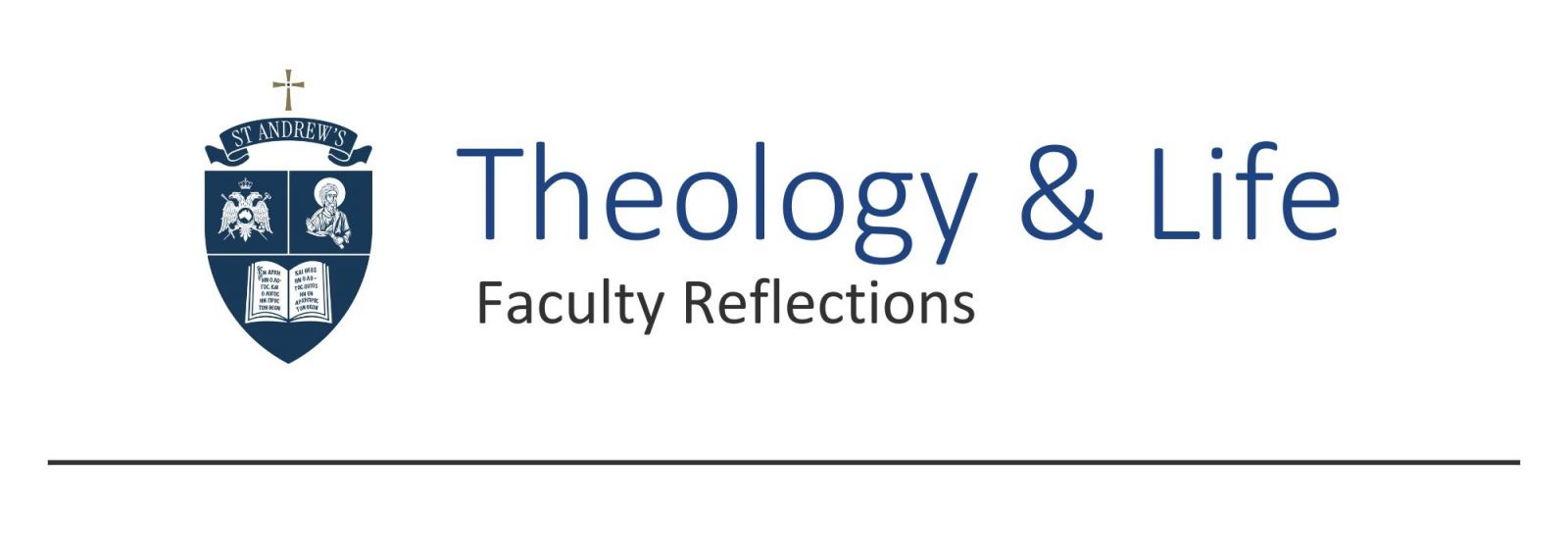- Home
- About us
- Students
- Courses
- Research
- Library
- News & Events
- Gallery
- Contact
- Our Blog
Latest News

The Liturgical Journey to Pascha:
Part One: The Pre-Lenten Period

“And the Lord God called to Adam and said to him, ‘Where are you? And who told you that you were naked?’”
(Genesis 3). Monreale Cathedral, Palermo (late 12th century).
by Dr Andrew Mellas (Senior Lecturer in Church History and Liturgical Studies)
The hymns we sing during the pre-Lenten period and during Great Lent invite us to reflect, ponder and pray. These hymns are sacred because they reveal to us the story of salvation. The story of salvation is a familiar one. We know how it begins. We know its twists and turns. We know its heroes and its wrongdoers. And we know how it ends. However, in experiencing the liturgical songs that tell us this story, we do not just listen. We enter this sacred narrative, and we become protagonists in the story that unfolds.
The hymns of the pre-Lenten period and Great Lent are collected in the liturgical book known as the Triodion. These hymns invite the Orthodox faithful to embark on a liturgical journey to Pascha. In singing these sacred songs, we experience the entire story of salvation. We stand beside Adam and Eve in Paradise, and we cry with them as we are exiled from the Garden of Eden. We travel to faraway lands and feel nostalgia as we weep for our homeland. We feel the hope of the Annunciation and the love of God who became human. We suffer with Christ as he willingly embraces his passion. We are crucified with him. We descend into Hades with him. And we arise with him on the day of the Resurrection—a day which has no evening.
Before Great Lent begins, the hymns of the Triodion prepare us for the journey ahead. We are taught how to pray, how to fast, how to cry and how to act. The first of these Sundays, the Sunday of the Publican and the Pharisee, is devoted to the Gospel story of a tax collector and a self-righteous man. We know how the Pharisee boasted about his good deeds and prayed with himself, while the Publican could not even raise his eyes up to heaven and prayed for God’s mercy. However, the hymns for this day take us deeper into this story, asking not to pray with the prideful voice of the Pharisee, but to emulate the humility of the Publican:
Almighty Lord, I know how powerful tears are. They brought Ezekias up from the gates of death. They delivered the sinful woman from the sins of many years. They justified the Tax Collector above the Pharisee. And so, I pray, “Numbering me with them, have mercy on me.”
Whoever exalts herself/himself will be humbled, but whoever experiences the power of tears and repentance, will find the grace of God in abundance.
The Gospel passage for the next Sunday in this pre-Lenten period is devoted to the Prodigal Son. It is the story of the younger son who demands his father give him his inheritance and who journeys to a faraway country. He squanders his inheritance and becomes poor and hungry. But when he feels compunction, he arises and returns to his father who shows him compassion, ordering that he be clothed in the finest robe. The hymns in the Triodion amplify this parable, portraying sin as exile from one’s homeland, as orphanhood and enslavement to depraved passion:
Of what great blessings, wretch that I am, have I deprived myself! From what a kingship in my misery have I fallen! I have wasted the wealth that I received. I have transgressed the commandment. O unhappy soul, alas! You are now condemned to eternal fire. Therefore, before the end, cry out to Christ our God, “God, receive me as the Prodigal Son and have mercy on me.”
However, the journey home that begins with the prodigal son’s tears is the salvation that every person created in the image of God desires. The prodigal son is an icon of repentance. The faithful are invited to make the voice of the Prodigal their own voice. As they sing the words of the hymn, the repentance and restoration of the Prodigal becomes their own journey of salvation.
The theme of the Sunday of the Last Judgment is taken from the gospel passage assigned for that day: Matthew 25:31–46. The faithful remember the Second Coming of Christ, who sits on a throne and places the righteous on his right hand and the wicked on his left hand:
When thrones are set up and books are opened, and God sits in judgment, O what fear there will be then! When the angels stand with fear in your presence and the river of fire is flowing, what shall we humans, guilty of many sins, do then? When we hear him calling the blessed of his Father into the Kingdom, but sending sinners away to punishment, who will withstand that fearful condemnation? But, O Saviour, only Lover of humankind, King of the ages, before the end comes, turn me back through repentance and have mercy on me.
They are told how they did or did not feed Christ when he was hungry, clothe him when he was naked and visit him when he was sick. And when they cannot fathom how this was possible, they realise that inasmuch as they did or did not do these things to their brothers and sisters, it was as if they did or did not do it to Christ. How amazing is this mystery? How can we learn to see Christ in our very neighbour? And how can we remember the Second Coming as having taken place on the Sunday of Last Judgment when it is yet to transpire? By remembering the Second Coming as an event that was already taking place liturgically in the hearts of the faithful, the hymns of this Sunday invite the Orthodox to experience the Last Judgment and to feel compunction.
The final Sunday of the pre-Lentedn period is Cheesefare Sunday. It is more commonly known as the Sunday of the Exile from Paradise because in the hymns of the Triodion, we remember the fall of Adam and Eve and their banishment from the Garden of Eden. The tears that Adam and Eve weep before the closed gates of Eden are connected with the forty-day fast of Christ in the desert. They mark the beginning of Great Lent by portraying it as exile from paradise.
After Cheesefare Sunday, Great Lent formally begins. Stay tuned for part two of this blog post, which will explore our liturgical journey during these 40 days.



.png)